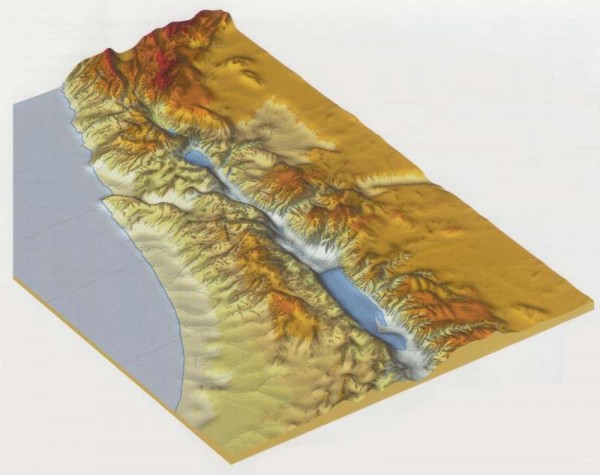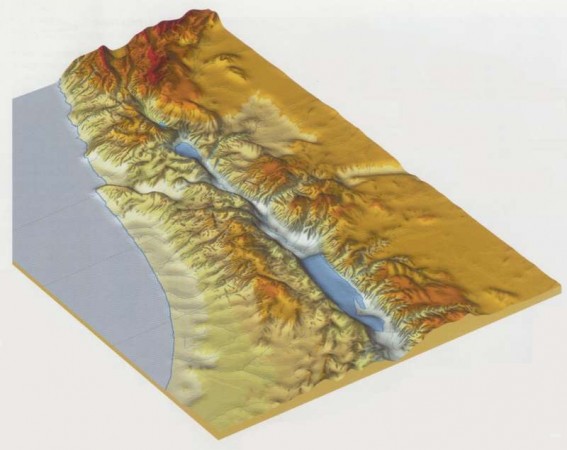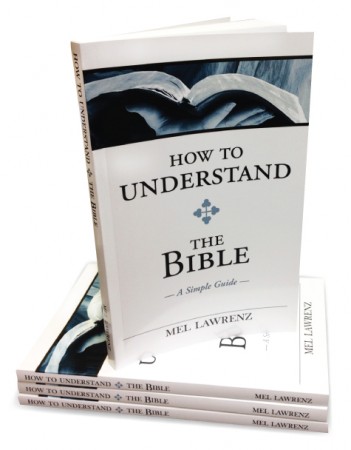One of the ways we know that the truth of the Bible is rooted in reality is that the story of the Bible—the drama of God’s interaction with humanity—unfolds in a real place. This is a real God engaging with real people across a timeline that goes for thousands of years in a specific part of the world. The Bible is not detached philosophy. It tells us what happened (in history) so that we can understand what happens (in life).
After the Pentateuch (the first five books of Scripture), there is a major transition as the wandering Israelites entered the ancient land of Canaan. Under Joshua, the Israelite armies conquered this territory promised to them by God as an inheritance (Josh. 1:1-6). The small land of Israel, just 200 miles long and 100 miles wide, would be the main stage for the drama of redemption until the world-changing mission of the apostles—altogether a span of two millennia.
What is it like, this “good and spacious land, a land flowing with milk and honey” (Ex. 3:8)? To the Hebrews who had left slavery in Egypt 40 years earlier, it was a true blessing. It wasn’t paradise, but the plains and hills were a good land for farmers who grew crops of wheat and barley, who developed groves of olive and fig trees, and tended vineyards. The coastal climate is similar to that of Southern California.
In the Old Testament, we find the connecting points between land, life, and theology. The three great festivals (Passover, Firstfruits, and Ingathering) corresponded to the beginning and end of harvests. Rain is the grace of God. Food on the table is the blessing of God. Drought is a time of testing. The land also supported the herding of sheep and goats. So it was easy to describe God’s care as his shepherding (Ps. 23), and Jesus as “the good shepherd.” Real land, real life, real people, real God.
But Israel was a difficult land to live in from a political point of view. The surrounding kingdoms were an almost continual threat, and part of that has to do with the geography of the land of Israel. If you look at a map of the region, what you will see is that this small strip of land is hemmed in by the Mediterranean Sea to the west and the Arabian Desert to the east. Then, to make things even more complicated, the region to the north and east—known as Mesopotamia—was home to a succession of aggressive empires: Assyria, Babylonia, Persia. To the south and west of Israel lay the great land of Egypt. So Israel is a small bridge of land between sea and desert, standing in the way of superpowers to the northeast and the southwest. This explains much of the history of the Old Testament. It is amazing, actually, that there were even brief times when Israel was strong enough to have security and stability.
To understand more about this place and the events that transpired there, picture this bird’s-eye view of the land. Going across the land from west to east, there are five main regions (picture them like strips running north to south). First, is the coastal plain. Flat, fertile, and lush, this is a desirable part of the land, and thus contested by people like the Philistines who occupied the southern coast for centuries. Chariot battles happened here—not so in the central mountainous region of the land.
To the east of the coastal plain are the foothills known as the Shephelah, which slope upwards to about 1,300 feet. The gentle hills of this region are also fertile, crisscrossed with olive groves and fig trees. It is also the battleground for many fights in the eras of Joshua and the Judges, and it’s the region where David famously stood up to the Philistine champion Goliath.

Moving east again, we come to the central mountainous region including Judea and Samaria. These low mountains—rising to just 3,500 feet—are rocky limestone hills, undulating across the landscape. Jerusalem sits on a set of such hills, as does Bethlehem.
The fourth region is the Jordan River Valley, which drops dramatically from the central mountains to below sea level.
And finally, to the east again, the high plateau region known as Transjordan rises. From here Moses viewed the Promised Land he was not allowed to enter.
In the north is the fertile plain and productive sea known as Galilee. More about that when we get to the New Testament.
This is “the land.” More than geography or a patch on a map, it is central to the covenant promise of God. Yet by the time we get to the new covenant, we find that God’s geography and the mission of his people extends to the whole world, just as he promised to Abraham, the man from Mesopotamia who walked across the chalky hills—“all peoples on earth will be blessed through you” (Gen. 12:3).
[from How To Understand the Bible]


Awesome video and geography lesson. Thank you.
Through the awesome video and geography lesson deepens my understanding of the bible and these is a deep stirring in my spirit . As I am a visual learner.
Through the awesome video and geography lesson deepens my understanding of the bible and these is a deep stirring in my spirit . As I am a visual learner.
The you tube video the was linked to the email titled ‘what is important about the land of the bible only gave me audio and no video on my iPad
amazing
I have found this whole series of understanding the Bible fascinating. I loved this video about the land of the Bible and even watched two more about the routes in the land and why they were so important to travelers and other countries. Now I understand why people are always trying to take their land.
Great job! Thanks
Thanks, Jeff.
A great video…thank you. It brings the Land of the Bible vividly to life.
God is constantly in our midst geographically. He has foothold with us and among us. His choicest portion of our world is visible and concrete. It is not as if he detached from us. He is Immanuel. Israel is evidence that He always present with us. God’s constancy is always constant.
I so appreciate the opportunity to read what Mel teaches, is very understandable to the layman and helps to create a complete image of story, people and setting.
he is a gifted teacher.
Thank you.
a side comment: I live in Illinois therefore do not attend Elmbrook regularly. I have enjoyed your book store and have purchased manybooks. The bookstore will no longer mail books from a phone order. I find this truly FRUSTRATING. I have happened upon a lady with whom I share books that I use for devotions, I do not want to give her my books but I cannot use the bookstore to mail them to her. SORRY TO SAY THIS BUT THAT IS A LUDICROUS DECISION ON THE PART OF SOME ONE IN YOUR ORGANIZATION.
From the heart of a 73 year old lady, I say: be cautious of where Elmbrook is moving.
Sorry that the bookstore changes have been limiting for you, Jayne. We can help you get to your friends any books that originate here (see http://www.wordway.org )
Great job. I just love this information! Having been there several years ago, this is all the more fascinating.
Thank you for sharing. I have great interest in geography and the Bible. Please continue to share more of this type of information.
I am pleasantly surprised how many people have shown an interest in biblical geography. It is fascinating, and explains so much.
Is this the next part? The reason being I have not any e-mails from you in awhile.
You should receive an email about once a week.
Such a small place to have had and still having major life events happen. Wonder why God only wanted such a tiny piece of land and a complicated people.
This is such a wonderful learning tool – God is so good. I’ve been reading the Scripture more in-depth, using the chronological Bible and having this visual map and narration is immensely helpful, engaging, and really helps to retain what one has read. I plan to read each e-mail and play the video often (this is the first one I received). Please do not remove me from your e-mail list – I look forward to receiving each segment. Thank you very much. God bless.
Glad it was helpful.
How can I get a copy of the bible land video shown in “What Is Important About the Land of the Bible?”
Thanks
Roland
I just finished a MOOC online University Bible course on “Lands & People of the Bible “. It was great. Thanks for posting this.
P..s.. I bought the Kindle edition of How to Understand the Bible. It is a really relaxing and enjoyable read.
I hail from Niger in West Africa, a french speaking country. A Muslim country with only about 2% Christians. It’s awesome, inspiring and a learning tool to learn that by the time we get to the new covenant, we find that God’s geography and the mission of his people extends to the whole world, just as he promised to Abraham, the man from Mesopotamia who walked across the chalky hills—“all peoples on earth will be blessed through you” (Gen. 12:3). I wish there is an electronic copy of How to understand the Bible for my non christian friends.
Mel, if you are ever leading a “Holy Land” tour, let me know. Serious.
Really enjoyed this segment about the land of the Bible. It was very informative and fascinating
with the video included . It helps to illustrate the land and the Bible more clearly.
I depend only our living God so that i want to know about how study in bible words.
I could not receive the video. Help.
I was very impressed with video….need all the help I can get understanding all about the Bible and so watching this video was very helpful. Many thanks.